

April 20 – 26: “Do you plot, plan, and outline?”
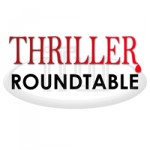 Do you plot, plan, and outline? Or, do you just go where your characters lead you? This week, ITW Members Bruce Desilva, Jean Heller, Mark Petry, Simon Wood, H. W. “Buzz” Bernard, Vincent Zandri, Colin Campbell, Graham Smith, Gary Haynes, Brian Pinkerton, Kevin Egan, J. L. Merrow, Alex Dolan and Ellen Kirschman will discuss why some authors are plotters and others are pantsers.
Do you plot, plan, and outline? Or, do you just go where your characters lead you? This week, ITW Members Bruce Desilva, Jean Heller, Mark Petry, Simon Wood, H. W. “Buzz” Bernard, Vincent Zandri, Colin Campbell, Graham Smith, Gary Haynes, Brian Pinkerton, Kevin Egan, J. L. Merrow, Alex Dolan and Ellen Kirschman will discuss why some authors are plotters and others are pantsers.
~~~~~
 Most of Jean Heller’s career was as an investigative and projects reporter and editor in New York City, Washington, D.C. and St. Petersburg Florida. Her career as a novelist began in the 1990s with the publication of the thrillers, “Maximum Impact” and “Handyman” by St. Martin’s Press. Then life intervened and postponed her new book, “The Someday File,” to publication in late 2014. Jean has won the Worth Bingham Prize, the Polk Award, and is an eight-time Pulitzer Prize nominee.
Most of Jean Heller’s career was as an investigative and projects reporter and editor in New York City, Washington, D.C. and St. Petersburg Florida. Her career as a novelist began in the 1990s with the publication of the thrillers, “Maximum Impact” and “Handyman” by St. Martin’s Press. Then life intervened and postponed her new book, “The Someday File,” to publication in late 2014. Jean has won the Worth Bingham Prize, the Polk Award, and is an eight-time Pulitzer Prize nominee.
 Ex Army, retired cop and former Scenes Of Crime Officer, Colin Campbell is the author of British crime novels, Blue Knight White Cross, and Northern Ex, and US thrillers Jamaica Plain, Montecito Heights, Adobe Flats and Snake Pass. His Jim Grant thrillers bring a rogue Yorkshire cop to America where culture clash and violence ensue.
Ex Army, retired cop and former Scenes Of Crime Officer, Colin Campbell is the author of British crime novels, Blue Knight White Cross, and Northern Ex, and US thrillers Jamaica Plain, Montecito Heights, Adobe Flats and Snake Pass. His Jim Grant thrillers bring a rogue Yorkshire cop to America where culture clash and violence ensue.
 Graham Smith is married with a young son. A time served joiner he has built bridges, houses and slated roofs to make ends meet. He now manages a busy hotel and wedding venue near Gretna Green, Scotland. An avid fan of crime fiction since being given one of Enid Blyton’s Famous Five books at the age of eight, he has also been a reviewer and interviewer for well-respected website Crimesquad.com for over five years.
Graham Smith is married with a young son. A time served joiner he has built bridges, houses and slated roofs to make ends meet. He now manages a busy hotel and wedding venue near Gretna Green, Scotland. An avid fan of crime fiction since being given one of Enid Blyton’s Famous Five books at the age of eight, he has also been a reviewer and interviewer for well-respected website Crimesquad.com for over five years.
 Mark Petry is a graduate of the University of Texas at Austin. He writes mystery and suspense thrillers. He’s all about the surprise ending. In his first novel, Class Dismissed, you had to wait till the last 2 pages to find out what really happened. In his latest, Secret Service, you’ll find out some secrets earlier on, but not all.
Mark Petry is a graduate of the University of Texas at Austin. He writes mystery and suspense thrillers. He’s all about the surprise ending. In his first novel, Class Dismissed, you had to wait till the last 2 pages to find out what really happened. In his latest, Secret Service, you’ll find out some secrets earlier on, but not all.
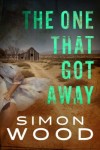 Simon Wood is a California transplant from England. He’s a former competitive racecar driver, a licensed pilot, an endurance cyclist and an occasional PI. He shares his world with his American wife, Julie. Their lives are dominated by a longhaired dachshund and four cats. He’s the Anthony Award winning author of Working Stiffs, Accidents Waiting to Happen, Paying the Piper, Terminated, Asking For Trouble, We All Fall Down and the Aidy Westlake series. His next thriller is THE ONE THAT GOT AWAY due out March ’15. He also writes horror under the pen name of Simon Janus.
Simon Wood is a California transplant from England. He’s a former competitive racecar driver, a licensed pilot, an endurance cyclist and an occasional PI. He shares his world with his American wife, Julie. Their lives are dominated by a longhaired dachshund and four cats. He’s the Anthony Award winning author of Working Stiffs, Accidents Waiting to Happen, Paying the Piper, Terminated, Asking For Trouble, We All Fall Down and the Aidy Westlake series. His next thriller is THE ONE THAT GOT AWAY due out March ’15. He also writes horror under the pen name of Simon Janus.
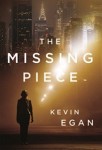 Kevin Egan is the author of seven novels, including his forthcoming The Missing Piece and Midnight, a Kirkus Best Book of 2013. He works in the iconic New York County Courthouse, which serves as the setting and inspiration for The Missing Piece. His short fiction has appeared in Alfred Hitchcock Mystery Magazine, Rosebud, and The Westchester Review. He graduated with a B.A. in English from Cornell University.
Kevin Egan is the author of seven novels, including his forthcoming The Missing Piece and Midnight, a Kirkus Best Book of 2013. He works in the iconic New York County Courthouse, which serves as the setting and inspiration for The Missing Piece. His short fiction has appeared in Alfred Hitchcock Mystery Magazine, Rosebud, and The Westchester Review. He graduated with a B.A. in English from Cornell University.
 Gary Haynes is the best-selling author of STATE OF HONOUR. STATE OF ATTACK is published by Harlequin (HarperCollins) on 7 February 2015. His books are described as: “Awesome adventures with countless twists and turns. Plots that seem as if they are lifted from today’s news on the threat of terrorism.” Gary “walked on the wild side” before deciding to study law at Warwick University and complete his postgraduate training at the College of Law. Gary writes cinematic-style, intelligent, fast-paced, action-packed espionage/political/military thrillers. He is writing a series of novels based on his main character, Tom Dupree, a special agent in the US Bureau of Diplomatic Security.
Gary Haynes is the best-selling author of STATE OF HONOUR. STATE OF ATTACK is published by Harlequin (HarperCollins) on 7 February 2015. His books are described as: “Awesome adventures with countless twists and turns. Plots that seem as if they are lifted from today’s news on the threat of terrorism.” Gary “walked on the wild side” before deciding to study law at Warwick University and complete his postgraduate training at the College of Law. Gary writes cinematic-style, intelligent, fast-paced, action-packed espionage/political/military thrillers. He is writing a series of novels based on his main character, Tom Dupree, a special agent in the US Bureau of Diplomatic Security.
 Alex Dolan was raised in Boston, lived in New York City, and currently resides in the San Francisco Bay Area. In addition to writing for several publications, he has recorded four music albums, and has a master’s degree in strategic communications from Columbia University. The Euthanist is his first novel.
Alex Dolan was raised in Boston, lived in New York City, and currently resides in the San Francisco Bay Area. In addition to writing for several publications, he has recorded four music albums, and has a master’s degree in strategic communications from Columbia University. The Euthanist is his first novel.
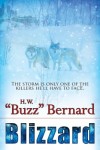 H. W. “Buzz” Bernard is a best-selling, award-winning novelist. His debut novel, Eyewall, was a number-one best seller in Amazon’s Kindle store. Two subsequent novels, Plague and Supercell, were winners of the EPIC eBook Award, suspense/thriller category. His fourth novel, Blizzard, was released in February. He’s at work on novel number five, Tsunami (working title), which is set in the Pacific Northwest. Buzz is a native Oregonian, but now calls Georgia home.
H. W. “Buzz” Bernard is a best-selling, award-winning novelist. His debut novel, Eyewall, was a number-one best seller in Amazon’s Kindle store. Two subsequent novels, Plague and Supercell, were winners of the EPIC eBook Award, suspense/thriller category. His fourth novel, Blizzard, was released in February. He’s at work on novel number five, Tsunami (working title), which is set in the Pacific Northwest. Buzz is a native Oregonian, but now calls Georgia home.
 Bruce DeSilva grew up in a parochial little Massachusetts mill town where metaphors, assonance, and irony were in short supply. Nevertheless, his crime fiction has won the Edgar and Macavity Awards; has been listed as a finalist for the Shamus, Anthony, and Barry Awards; and has been published in ten foreign languages. His short stories have appeared in Akashic Press’s award-winning noir anthologies. He has reviewed books for The New York Times Sunday Book Review and Publishers Weekly, and his reviews for The Associated Press appear in hundreds of newspapers and websites. Previously, he was a journalist for forty years, editing stories that won nearly every major journalism prize. He and his wife, the poet Patricia Smith, live in New Jersey with two enormous dogs named Brady and Rondo.
Bruce DeSilva grew up in a parochial little Massachusetts mill town where metaphors, assonance, and irony were in short supply. Nevertheless, his crime fiction has won the Edgar and Macavity Awards; has been listed as a finalist for the Shamus, Anthony, and Barry Awards; and has been published in ten foreign languages. His short stories have appeared in Akashic Press’s award-winning noir anthologies. He has reviewed books for The New York Times Sunday Book Review and Publishers Weekly, and his reviews for The Associated Press appear in hundreds of newspapers and websites. Previously, he was a journalist for forty years, editing stories that won nearly every major journalism prize. He and his wife, the poet Patricia Smith, live in New Jersey with two enormous dogs named Brady and Rondo.
 Vincent Zandri is the NEW YORK TIMES and USA TODAY bestselling author of more than 16 novels including THE INNOCENT, GODCHILD, THE REMAINS, MOONLIGHT RISES, and the forthcoming, EVERYTHING BURNS. He is also the author of numerous Amazon bestselling digital shorts, PATHOLOGICAL, TRUE STORIES and MOONLIGHT MAFIA among them. Harlan Coben has described THE INNOCENT (formerly As Catch Can) as “…gritty, fast-paced, lyrical and haunting,” while the New York Post called it “Sensational…Masterful…Brilliant!” A freelance photo-journalist and the author of the popular “lit blog,” The Vincent Zandri Vox, Zandri has written for Living Ready Magazine, RT, New York Newsday, Hudson Valley Magazine, The Times Union (Albany), Game & Fish Magazine, and many more. He is a resident of both New York and Florence, Italy.
Vincent Zandri is the NEW YORK TIMES and USA TODAY bestselling author of more than 16 novels including THE INNOCENT, GODCHILD, THE REMAINS, MOONLIGHT RISES, and the forthcoming, EVERYTHING BURNS. He is also the author of numerous Amazon bestselling digital shorts, PATHOLOGICAL, TRUE STORIES and MOONLIGHT MAFIA among them. Harlan Coben has described THE INNOCENT (formerly As Catch Can) as “…gritty, fast-paced, lyrical and haunting,” while the New York Post called it “Sensational…Masterful…Brilliant!” A freelance photo-journalist and the author of the popular “lit blog,” The Vincent Zandri Vox, Zandri has written for Living Ready Magazine, RT, New York Newsday, Hudson Valley Magazine, The Times Union (Albany), Game & Fish Magazine, and many more. He is a resident of both New York and Florence, Italy.
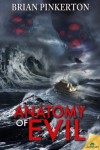 Brian Pinkerton tells stories to frighten, amuse and intrigue. His novels include Anatomy of Evil, Killer’s Diary, Abducted, Vengeance, Bender, Rough Cut and How I Started the Apocalypse. Select titles have also been released as audio books and in foreign languages. Brian’s short stories have appeared in Chicago Blues, PULP! and The Horror Zine.
Brian Pinkerton tells stories to frighten, amuse and intrigue. His novels include Anatomy of Evil, Killer’s Diary, Abducted, Vengeance, Bender, Rough Cut and How I Started the Apocalypse. Select titles have also been released as audio books and in foreign languages. Brian’s short stories have appeared in Chicago Blues, PULP! and The Horror Zine.
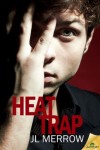 J. L. Merrow is that rare beast, an English person who refuses to drink tea. She read Natural Sciences at Cambridge, where she learned many things, chief amongst which was that she never wanted to see the inside of a lab ever again. Her one regret is that she never mastered the ability of punting one-handed whilst holding a glass of champagne. She writes across genres, with a preference for contemporary gay romance and the paranormal, and is frequently accused of humor. Her novella Muscling Through was a 2013 EPIC Award finalist, and her novel Slam! won the 2013 Rainbow Award for Best LGBT Romantic Comedy.
J. L. Merrow is that rare beast, an English person who refuses to drink tea. She read Natural Sciences at Cambridge, where she learned many things, chief amongst which was that she never wanted to see the inside of a lab ever again. Her one regret is that she never mastered the ability of punting one-handed whilst holding a glass of champagne. She writes across genres, with a preference for contemporary gay romance and the paranormal, and is frequently accused of humor. Her novella Muscling Through was a 2013 EPIC Award finalist, and her novel Slam! won the 2013 Rainbow Award for Best LGBT Romantic Comedy.
 Ellen Kirschman is an award-winning public safety psychologist. She is the author of the best-selling I Love a Cop: What Police Families Need to Know, I Love a Fire Fighter: What the Family Needs to Know, and co- author of the forthcoming book, Counseling Cops: What Clinicians Need to Know. A pioneer in the field of police psychology, her workshops and seminars have taken her to twenty-two states and four countries. She is a lead clinician at the West Coast Post Trauma Retreat for first responders with post traumatic stress injuries and a member of the Police Psychology Sub-section of the International Association of Police Chiefs, the Society for Police and Criminal Psychology, and the International Association of Women in Policing. Burying Ben, her first novel, is drawn from her years of experience working side by side with officers on the street and listening to their secrets in the confines of her consulting room. While Ellen loves cops, she is married to a remodeling contractor. She and her husband live in the San Francisco Bay Area.
Ellen Kirschman is an award-winning public safety psychologist. She is the author of the best-selling I Love a Cop: What Police Families Need to Know, I Love a Fire Fighter: What the Family Needs to Know, and co- author of the forthcoming book, Counseling Cops: What Clinicians Need to Know. A pioneer in the field of police psychology, her workshops and seminars have taken her to twenty-two states and four countries. She is a lead clinician at the West Coast Post Trauma Retreat for first responders with post traumatic stress injuries and a member of the Police Psychology Sub-section of the International Association of Police Chiefs, the Society for Police and Criminal Psychology, and the International Association of Women in Policing. Burying Ben, her first novel, is drawn from her years of experience working side by side with officers on the street and listening to their secrets in the confines of her consulting room. While Ellen loves cops, she is married to a remodeling contractor. She and her husband live in the San Francisco Bay Area.
- LAST GIRL MISSING with K.L. Murphy - July 25, 2024
- CHILD OF DUST with Yigal Zur - July 25, 2024
- THE RAVENWOOD CONSPIRACY with Michael Siverling - July 19, 2024
